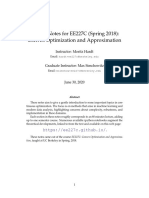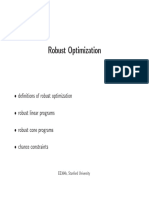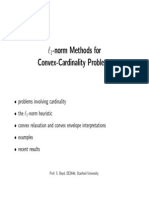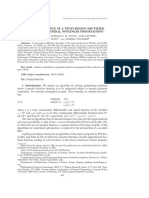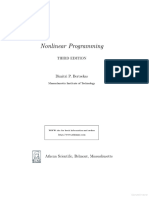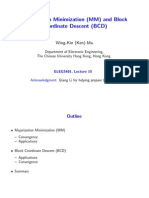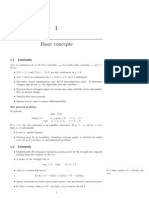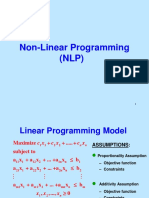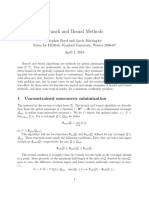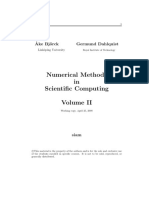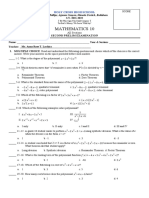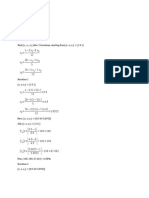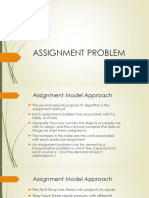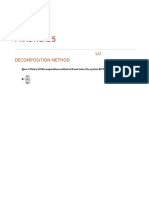0% found this document useful (0 votes)
86 views43 pagesAdvanced Convex Optimization Techniques
Sequential convex programming (SCP) is a local optimization method for nonconvex problems that solves a sequence of convex subproblems. At each step, SCP forms convex approximations of the objective and constraints around the current solution. It then solves the approximated convex problem to update the solution. While SCP is only guaranteed to find a local optimum, it leverages efficient convex solvers and often finds solutions with good objective values. The approximations are formed using techniques like Taylor approximations, fitting convex functions to sampled points, or penalizing constraint violations.
Uploaded by
myturtle game01Copyright
© © All Rights Reserved
We take content rights seriously. If you suspect this is your content, claim it here.
Available Formats
Download as PDF, TXT or read online on Scribd
0% found this document useful (0 votes)
86 views43 pagesAdvanced Convex Optimization Techniques
Sequential convex programming (SCP) is a local optimization method for nonconvex problems that solves a sequence of convex subproblems. At each step, SCP forms convex approximations of the objective and constraints around the current solution. It then solves the approximated convex problem to update the solution. While SCP is only guaranteed to find a local optimum, it leverages efficient convex solvers and often finds solutions with good objective values. The approximations are formed using techniques like Taylor approximations, fitting convex functions to sampled points, or penalizing constraint violations.
Uploaded by
myturtle game01Copyright
© © All Rights Reserved
We take content rights seriously. If you suspect this is your content, claim it here.
Available Formats
Download as PDF, TXT or read online on Scribd
/ 43



